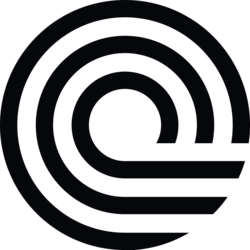Google will unveil a new version of its Android design language at its upcoming Google I/O developer conference, according to an event schedule posted to TechCrunch. The new design language, reportedly named Material 3 Expressive, was accidentally revealed by Google in the event schedule, giving a glimpse into the tech giant's plans for the future of its Android operating system.
The Accidental Revelation
The leak of details regarding Google's new Android design language, Material 3 Expressive, has sparked curiosity and anticipation among developers and Android enthusiasts. While unintentional, this sneak peek has provided insights into Google's evolving design philosophy and the enhancements users can expect in the upcoming Android update.
Google's inadvertent disclosure of Material 3 Expressive in the event schedule has set the stage for a potentially significant shift in the visual and interactive elements of the Android user experience. The tech community is abuzz with speculation about the potential impact of this new design language on app development and user interface design.
Key Features of Material 3 Expressive
Material 3 Expressive is expected to introduce a range of new features and visual enhancements aimed at improving the overall user experience on Android devices. From revamped animations to enhanced typography, Google's latest design language is poised to redefine the look and feel of Android applications.
One of the key focal points of Material 3 Expressive is the emphasis on expressive design elements that enable developers to create more dynamic and engaging user interfaces. With an expanded set of tools and design guidelines, Google is empowering developers to craft visually stunning and interactive experiences for Android users.
Enhanced User Interaction
Material 3 Expressive is set to revolutionize user interaction on Android devices by introducing new gestures, animations, and responsive UI elements. Google's focus on enhancing user engagement and interactivity underscores the company's commitment to delivering a seamless and intuitive user experience across its ecosystem of devices.
By prioritizing fluid and natural user interactions, Material 3 Expressive aims to elevate the usability of Android apps and elevate the overall user experience. With a strong emphasis on user-centric design principles, Google is striving to create an immersive and engaging interface that resonates with users.
Developer Tools and Resources
Google's upcoming release of Material 3 Expressive is expected to be accompanied by a robust suite of developer tools and resources designed to aid app developers in implementing the new design language effectively. From updated design guidelines to code libraries, Google is equipping developers with the necessary resources to leverage the full potential of Material 3 Expressive.
With a strong emphasis on developer productivity and efficiency, Google is streamlining the app development process by providing comprehensive documentation and support for implementing Material 3 Expressive. Developers can look forward to a wealth of resources that will enable them to create visually stunning and feature-rich Android applications.
Design Language Evolution
Material 3 Expressive represents a significant milestone in the evolution of Google's Android design language, building upon the foundation laid by its predecessors. By incorporating new design elements and interactive features, Google is signaling a continued commitment to innovation in user interface design and user experience.
The evolution of Material Design underscores Google's dedication to staying at the forefront of design trends and technology advancements. With Material 3 Expressive, Google is not only shaping the future of Android app design but also setting new standards for user interface aesthetics and functionality.
Implications for Android Ecosystem
The introduction of Material 3 Expressive is poised to have far-reaching implications for the Android ecosystem as a whole. From app developers to end-users, the adoption of Google's new design language is expected to redefine the visual landscape of Android applications and elevate the overall quality of user experiences.
As developers embrace Material 3 Expressive and incorporate its design principles into their apps, Android users can anticipate a more cohesive and visually appealing app environment. Google's focus on consistency and user-centric design is likely to result in a more streamlined and engaging Android experience for users across the globe.
If you have any questions, please don't hesitate to Contact Us
Back to Technology News
















































